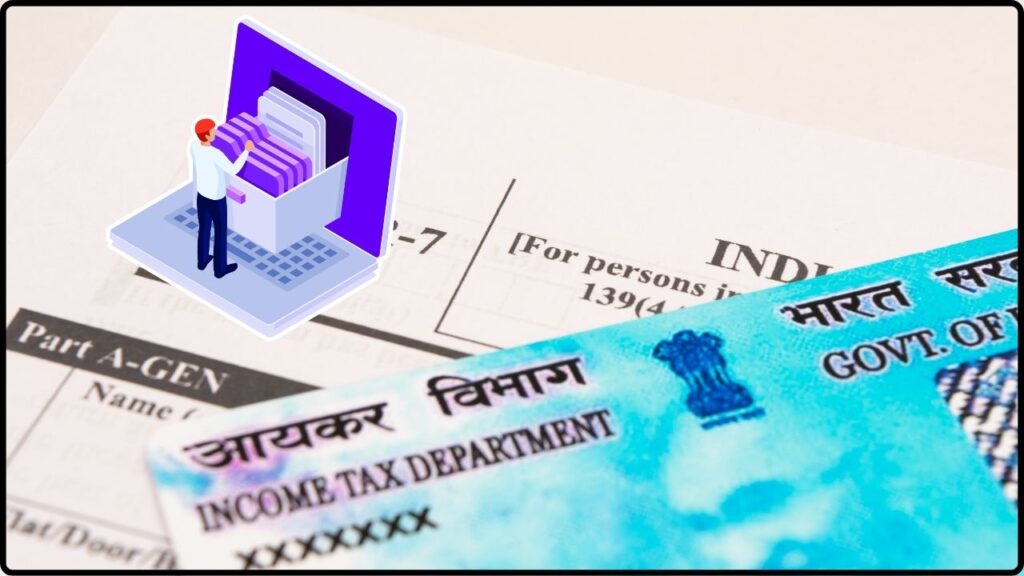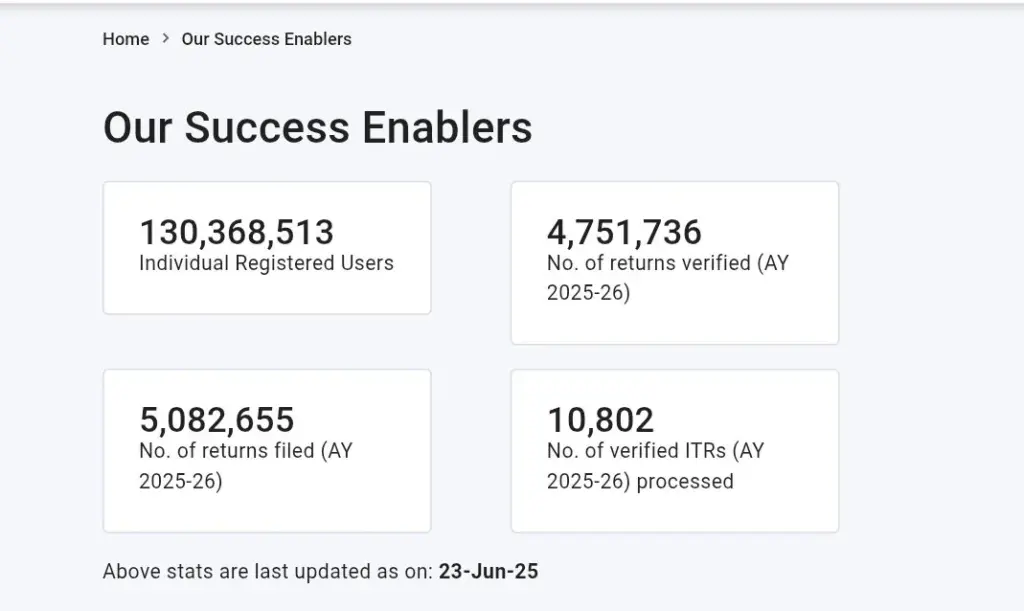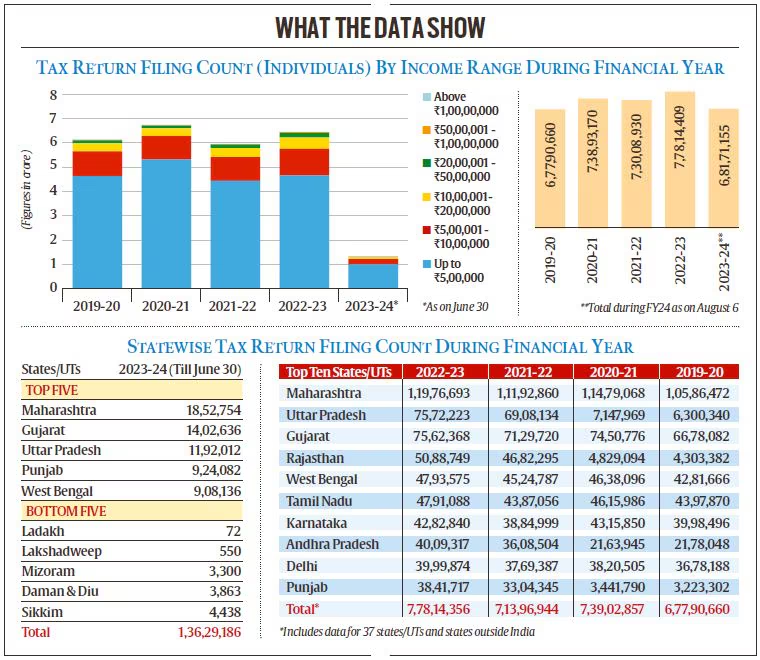ITR 2025 Filing Guide: If you believe that filing taxes is only for those with a steady paycheck or a thriving business, you’re not alone. Many students and unemployed individuals assume they don’t need to worry about filing income tax returns. But the ITR 2025 Filing Guide is here to bust that myth. Filing your Income Tax Return (ITR) isn’t just about taxes—it’s about building your financial credibility, claiming money that’s rightfully yours, and setting yourself up for future opportunities. Even if your income is below the exemption threshold, voluntarily filing an ITR can give you benefits that will pay off for years. Let’s break it down in simple, clear terms so that even a 10-year-old could follow along, while still giving professionals the detailed insights they need.
ITR 2025 Filing Guide
The ITR 2025 Filing Guide makes it clear: filing an income tax return isn’t just about paying taxes—it’s about securing your financial future. For students and unemployed individuals, filing ITR helps with claiming refunds, maintaining financial credibility, and unlocking opportunities like loans, credit cards, and visas. Even if your income is below the taxable limit, filing a return is a smart financial move. Don’t skip it—your future self will thank you.

| Aspect | Details |
|---|---|
| Who Should File? | Students, unemployed, freelancers, and anyone with financial transactions |
| Why File ITR? | Proof of income, claim refunds, carry-forward of capital losses, build credibility |
| Deadline AY 2025-26 | September 15, 2025 (regular); December 31, 2025 (belated with penalty) |
| Penalties | ₹5,000 if income > ₹5 lakh; ₹1,000 if below |
| Exemption Thresholds | Old regime: ₹2.5 lakh; New regime: ₹3 lakh (raised to ₹4 lakh in Budget 2025) |
| Official Resource | Income Tax India e-filing portal |
Why Students and the Unemployed Should Still File ITR?
Proof of Income for Future Needs
Even if you aren’t earning much, your ITR acts as an official record of income. This proof is valuable when applying for:
- Student loans or education loans.
- Scholarships that require income verification.
- Study abroad visas where consulates ask for financial history.
Having ITRs on hand is like maintaining a money résumé—it shows you’re financially responsible.
Claiming Refunds Easily
Banks in India deduct Tax Deducted at Source (TDS) on fixed deposits. If your actual income is below the exemption limit, you’re eligible to claim this money back—but only if you file an ITR. Similarly, in the United States, students and part-timers often see withholding tax from their paychecks or freelance income. Filing a tax return ensures you get those dollars back in your bank account.
Carry Forward of Capital Losses
Did you try trading in stocks or cryptocurrency and ended up losing money? Filing ITR allows you to carry forward those losses for up to eight years. That means if you make profits in the future, you can set off earlier losses against them, lowering your tax bill. Without filing, you lose this benefit.
Building Credibility with Institutions
Whether it’s a bank loan application, applying for a credit card, or even renting an apartment in some cities, your financial credibility matters. Consistently filing your ITR—even with zero income—shows financial discipline. Employers, banks, and visa officers all view this positively.

Mandatory Filing Rules (AY 2025–26)
While filing is optional if you fall below the exemption threshold, it becomes mandatory under specific conditions. These include:
- Deposits of more than ₹50 lakh in a savings account or ₹1 crore in a current account.
- Spending more than ₹2 lakh on foreign travel.
- Annual business turnover exceeding ₹60 lakh.
- TDS/TCS deductions exceeding ₹25,000 (₹50,000 for senior citizens).
- Holding foreign assets or having a foreign bank account.
In the United States, the IRS requires dependents, students, or unemployed individuals to file if their unearned income (like dividends or interest) exceeds $1,250 or if their self-employment income is over $400 (IRS.gov).
Latest Updates for ITR 2025
- The Union Budget 2025 increased the exemption threshold under the new regime from ₹3 lakh to ₹4 lakh.
- The regular filing deadline for AY 2025–26 has been extended to September 15, 2025.
- More detailed disclosures are now required to claim deductions—for example, policy numbers for insurance, details of rent paid, and loan particulars.
Deadlines and Penalties
- Normal Filing: September 15, 2025.
- Belated Filing: Until December 31, 2025, with penalties.
- Penalties: ₹5,000 if income exceeds ₹5 lakh, and ₹1,000 if it’s below.
Missing the deadline not only attracts penalties but also means losing benefits like carrying forward losses or receiving timely refunds.

Step-by-Step Guide for ITR 2025 Filing Guide
Step 1: Collect Your Documents
- India: PAN, Aadhaar, Form 26AS, Annual Information Statement (AIS), bank account details, and investment proofs.
- U.S.: Social Security Number (SSN), W-2/1099 forms, interest statements, and bank details.
Step 2: Choose the Right Form
- In India:
- ITR-1 (Sahaj) for individuals with simple income up to ₹50 lakh.
- ITR-2/3 for those with capital gains or business income.
- In the U.S.:
- Form 1040 for individuals.
Step 3: File Online or Offline
- In India: Use the Income Tax e-filing portal.
- In the U.S.: Use IRS Free File or approved software like TurboTax.
Step 4: Verify Your Return
- India: Through Aadhaar OTP, net banking, or mailing ITR-V.
- U.S.: By e-signature or mailing signed forms.
Step 5: Claim Deductions and Credits
- India: Section 80C investments (PPF, ELSS), Section 80D (health insurance), Section 80E (education loans).
- U.S.: Student loan interest, tuition fee deductions, retirement account contributions.
Step 6: Correct Mistakes if Needed
- India: Use ITR-U (Updated Return).
- U.S.: File Form 1040-X (Amended Return).

Tools and Resources for Easy Filing
- India: ClearTax, myITReturn, TaxBuddy.
- U.S.: TurboTax, H&R Block, IRS Free File.
- Both countries also provide free mobile-friendly portals for e-filing.
Common Mistakes to Avoid
- Entering incorrect bank details, delaying refunds.
- Forgetting to verify returns—an unverified ITR isn’t valid.
- Not declaring small incomes, such as savings account interest.
- Filing after the deadline, resulting in penalties and loss of benefits.
U.S. vs India Filing: Key Differences
| Aspect | India | U.S. |
|---|---|---|
| Threshold | ₹2.5–4 lakh depending on tax regime | $12,950 for single filers in 2025 |
| Dependents/Students | Can file nil returns voluntarily | Must file if unearned income > $1,250 |
| Forms | ITR-1 to ITR-7 | Form 1040, 1040-SR, 1040-X |
| Filing Portal | incometax.gov.in | IRS.gov |
Practical Examples
- A student in India earns ₹20,000 in interest from fixed deposits. The bank deducts ₹2,000 as TDS. Since their income is below the exemption limit, filing ITR allows them to claim the full refund.
- An unemployed U.S. citizen earns $1,500 freelancing. The IRS withholds $200 in tax. Filing Form 1040 ensures they get their refund back.
- A young crypto investor in India loses ₹50,000 in trading. Filing ITR helps them carry forward this loss for eight years to offset future gains.
Expert Tips for Filing
- File early to avoid last-minute errors.
- Keep all tax-related documents in a secure digital folder.
- Invest in tax-saving schemes to reduce taxable income.
- Consult a tax professional if your income sources are complex.
- Double-check every entry before submission to prevent mismatches with Form 26AS or AIS.
ITR Filing 2025 Warning: 7 Common Issues Taxpayers Must Watch Out For
ITR-6 Excel Utility Released – Check If You Need to File This Year
ITR Refund Delayed? Here’s Why It’s Taking Longer and How You Can Track Your Status










